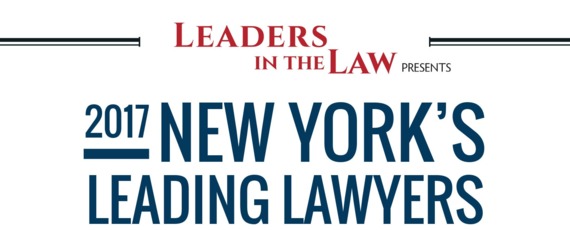
Motorcycle accidents in New York are often complex, particularly when they involve lane-splitting, the practice of riding between lanes of slow-moving or stopped traffic. Unlike some states, New York law prohibits this practice, which can complicate liability determinations in an accident. Understanding the legal implications of lane-splitting and safety concerns is crucial for motorcyclists navigating New York’s congested roads.
“Handled my case with ease and got me the best outcome possible. I highly recommend Nick Bagley, many other law firms declined my case but he took it and won.”
Injured Due to Negligence? Let Us Fight for Your Rights!
Speak to a Winning Motorcycle Accident Attorney
An experienced New York motorcycle accident lawyer at Friedman, Levy, Goldfarb, Green & Bagley, P.C. can investigate every aspect of your case. Our skilled team will work to recover compensation for your damages and losses, including medical expenses and lost wages, so that you can get back on your bike as soon as possible. Call today for a free consultation.
Understanding Lane Splitting in New York
As of 2024, California is the only U.S. state where lane splitting is legal. Other states, such as Arizona, Utah, Montana, Minnesota, and Colorado, have enacted laws permitting lane filtering. However, as noted above, New York law states, “No person shall operate a motorcycle between lanes of traffic or between adjacent lines or rows of vehicles.” In addition, “the operator of a motorcycle shall not overtake and pass in the same lane occupied by the vehicle being overtaken.”
While lane splitting is illegal, motorcyclists can use the whole lane. Other vehicles cannot pass a motorcycle inside the motorcyclist’s lane or impose on the lane’s space.
What is the Difference Between Lane Splitting and Lane Filtering?
Lane splitting and lane filtering allow motorcyclists to pass between vehicles but differ based on traffic conditions and legality. Lane splitting involves riding between lanes of moving vehicles, typically in congested traffic, to bypass slow-moving cars and reduce travel time.
In contrast, lane filtering occurs between stopped or very slow-moving vehicles—usually at speeds under 20 mph—and is designed as a safety measure to avoid rear-end collisions in stop-and-go traffic or at intersections. It is also illegal in New York. In either situation, the motorcyclist is much closer to other vehicles when lane splitting or lane filtering and thus more vulnerable.
Common Causes of Lane Splitting Accidents
Although lane splitting is illegal in New York, it remains a factor in many motorcycle accidents. Common causes of accidents include limited visibility, as drivers may not see motorcycles passing between lanes, sudden lane changes by cars that fail to check blind spots, and narrow spaces between vehicles, which leave little room for error. Additionally, road debris or uneven surfaces can destabilize motorcycles. These risks are often compounded by distracted driving or speeding by other motorists.
Insurance Regulations and the Determination of Fault
New York is a no-fault state for car insurance, which covers medical expenses and a percentage of lost wages, no matter who is at fault. However, that does not extend to motorcycles. New York motorcyclists must carry liability insurance to legally operate their motorcycles on public roads. The state mandates minimum coverage of $25,000 for bodily injury per person, $50,000 for multiple people, and $10,000 for property damage.
This insurance ensures that motorcyclists can cover damages or injuries they may cause to others in an accident. However, they must rely on their health insurance or file a personal injury claim against the negligent driver for medical expenses.
In New York State, a motorcyclist involved in an accident while lane splitting will likely be deemed at least partially at fault due to the unlawful maneuver. However, fault allocation depends on the specific circumstances and contributing factors of the accident. Under New York’s comparative negligence standard, responsibility can be shared, meaning the other driver may also be partially at fault if they acted negligently, such as by making improper lane changes or failing to check blind spots.
Comparative Negligence and Lane Splitting in New York
The state operates under a pure comparative negligence standard regarding liability. Under New York law, comparative negligence in motorcycle accidents means that even if a motorcyclist is partially responsible for the collision, they can still receive compensation if they are not 100 percent at fault.
Can You Still Recover Compensation If You Were Lane Splitting?
Because of New York’s pure comparative negligence standard, you may still recover compensation even if lane splitting. The amount of compensation is reduced according to your percentage of fault. For example, if a jury determines you are 30 percent at fault for lane-splitting, any award is reduced by that percentage. In this scenario, a $100,000 award is reduced to $70,000.
Why You Need a Lawyer for Lane Splitting Accident Claims
The New York motorcycle accident attorneys at Friedman, Levy, Goldfarb, Green & Bagley understand and appreciate the risks and dangers faced by New York State’s almost 400,000 licensed riders. If your bike is damaged and you suffer injuries because a negligent motorist caused a crash, we can help.
We will investigate every aspect of your case. That includes gathering evidence, such as surveillance video, that may have captured the collision, as well as dashcam footage, cellphone records, and traffic data from GPS and navigation services. We also review your medical records and the police report and interview any eyewitnesses.
We may also hire accident reconstructionists to analyze how the crash occurred. Medical experts will testify to your injuries’ severity and long-term impact. An economic expert can testify regarding your financial losses due to your injuries. That may include the inability to work in your former occupation or engage in meaningful labor.
Traffic laws regarding motorcycles in New York are complex. You need a motorcycle accident attorney who is thoroughly familiar with these laws and can use that expertise to your advantage. Based on the specific circumstances of your case, we will work to settle your case for the maximum compensation amount possible.
What is the Statute of Limitations?
In New York, the statute of limitations for filing a personal injury lawsuit is generally three years from the date of the accident. The court will generally dismiss the case if the deadline is missed.
Schedule a Free Consultation
The New York City motorcycle personal injury lawyers at Friedman, Levy, Goldfarb, Green & Bagley will fight for the maximum damages you deserve for your injuries. We have successfully helped riders in Manhattan, Brooklyn, the Bronx, and throughout New York City and Long Island recognize the lowball offers and other tactics used by insurance companies to settle cases for less than they are worth. Schedule a free, no-obligation consultation today. Since we work on a contingency fee basis, you will not pay attorney’s fees unless we win compensation for your injuries.






